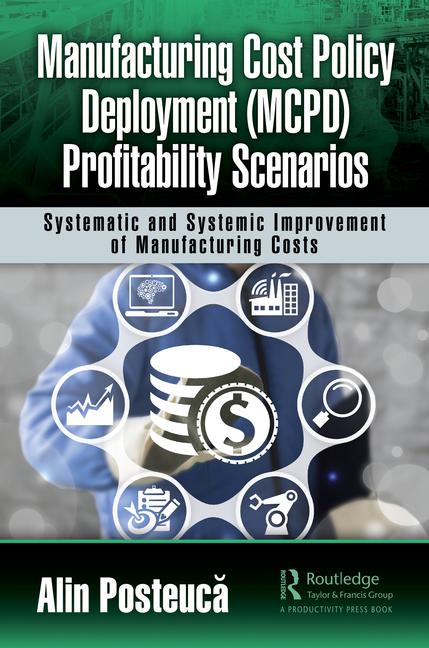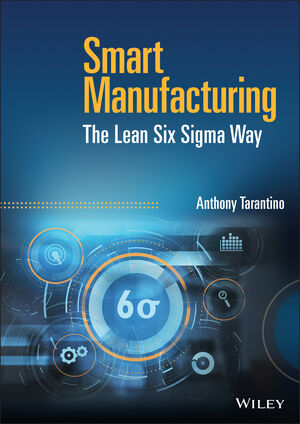"Creative" and “lean.” Do those words go together? I have been a lean practitioner for more than 20 years, and I’ve never heard the phrase “creative lean.” But don’t we love those creative solutions? Don’t we get excited when an idea comes from out in left field and it works? Why do we love those creative solutions so much more than just applying standard methodologies when problem solving? Could it be that hidden creativity gene buried somewhere inside of us?
There’s only one thing holding us back from being more creative on the assembly line: ourselves. Engineers tend to be pragmatic. We see things in black and white. We are data driven. Manufacturing tends to attract level-headed, hard-working types who enjoy making things. We take raw part A, process it through machine B, and out comes widget C.
However, when it comes to lean and continuous improvement, this black-and-white mentality can interfere with our ability to come up with creative solutions to our lean challenges.
So how can we apply a creative approach to lean? In lean, we like to make value-stream maps. We map the current process, and then design the future state. How does your team design the future state? Do you start with a vision? Does your team think creatively, or do they just stick to standard methodologies, identifying and eliminating waste? Yes, identifying and eliminating waste is the foundation of lean. But why stop there? Why not imagine something original and innovative? Try looking at your processes in colors other than black and white.
To start the creative process, I tell my teams to imagine they have a blank slate and an open checkbook. Of course, most of us have anything but an open checkbook, but when you think creatively you cannot limit yourselves! That mindset of budget limitations stifles your creativity from the very beginning. You want your teams to picture a perfect process with zero waste.
When an artist imagines a new painting, he doesn’t start by thinking, “I only have red, white and blue paint, so I can only paint an American flag.” Your teams should design a perfect process using everything available in the world today. Once your team has agreed on what a perfect process looks like, compare that to your available resources. How close can you get to that perfect process? You will find there are many parts that you can do.
Next, identify those parts of the perfect process you cannot do due to lack of money, space or other resource. That is when the creative process really starts. How close can you get to that perfect process with a less expensive way? For example, let’s say you pictured an AGV delivering parts to a subassembly station autonomously, but you can’t afford a new one. Can you afford a used one? What about assigning an additional route to an existing tugger, or adding carts to an existing tugger route? Can you pull some carts using a forklift that regularly passes by that station? How can you achieve the same effect as an AGV without actually having one?
Here is an example of how a team I was leading went through the creative lean process to overcome a challenge at our assembly plant. Our product is only 85 percent complete when it leaves the factory. The remaining 15 percent of the assembly process is done by the dealer. Two associates pick and pack fasteners to ship to the dealer to complete the assembly.
The picking process was laborious. The associates picked parts from bins spread out on two 12-foot-long tables. The fasteners were packed in five numbered bags that corresponded to a certain part of the final assembly process. The associates would walk back and forth about four hours a day, filling 200 sets of these five bags. They did a great deal of walking to fill those bags!
Our first thought was to automate the system, but quotes ranged from $150,000 to $225,000. Totally out of the question. Then, we thought of implementing a vertical storage unit that could move the parts to the pickers, instead of the other way around. That solution would cost $85,000 to $110,000, which was also out of the question.
It was then that we got creative. One team member brought up the idea of a lazy Susan. He had recently eaten at a Chinese restaurant, and his table had a big lazy Susan in the middle. That was our inspiration. Could we design and build a round, rotating parts carousel that would bring the parts to the pickers and stay within our budget?
Fortunately, we had some mechanical engineers on our kaizen team. The team did some engineering to come up with size, rotation speeds and other specifications that we needed to make our idea feasible. Three weeks later, we had a fully functional carousel designed, fabricated and painted for a mere $6,800! It worked well, and the pickers loved it. Had the team not been open to a creative solution, the carousel idea would never have been brought up, much less implemented.
Creative lean can generate unconventional and creative solutions to everyday challenges, but not everyone is suited to be a creative lean thinker. You need to actively seek out creative individuals and make them a central part of your lean efforts. Inspire your teams to look beyond the conventional approach. Creative lean is as much an attitude as it is a technique. Don’t stifle your team’s creativity, encourage it!







